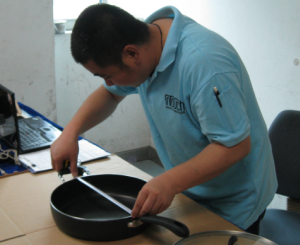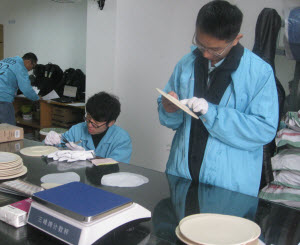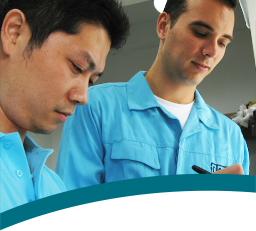Sponges are an important household product, and a product for which InTouch takes quality seriously. InTouch's household product inspection teams have a wide range of experience in household products, with a significant amount of this in inspecting and testing sponges.
Millions of household use sponges because they have the capability to absorb the water when cleaning or bathing. Most of the sponges are made from foamed plastic polymers and cellulose wood fibers. There are different types of sponges that can be found in the market today. The basic types of sponges used in the households are:

- Cellulose Sponge - One of the most common sponges and used to clean dishes and other surfaces. The sponge is made from a thin scrubbing pad and cellulose.
- Abrasive Sponge - Used to clean hard dirt and grime. Abrasive sponges may harm the surface and it is advisable that the surface can withstand and not suffer from scratches due to the sponge.
- Natural Sponge - The natural sponges are non-toxic, chemical free and natural as they are sea sponges. This type is often used for bathing and other personal uses.
- Dry Sponge- This type of sponges are not designed to use with water. Used as an alternative to feather dusters that does not really absorb dirt like dry sponges do.
Here are a few key sponge inspection and quality control standards that are used in the creation of a good testing and inspection programs:

- Association of German Engineer Standards: Rubber sponges must conform with VDI 2005 tolerance for sectional dimension, length and hardness.
- The Society of Protective Coatings AB4 Standard: The Society of Protective Coatings AB4 Standard contains quality control procedures for using Recyclable Encapsulated Abrasive Sponge Media.
- American Society for Testing Materials: The ASTM WK28302 and WK26967 Sponge Inspection Test for the determination of cleaning efficacy of hard surface cleaning sponges.
- Pre-production stage
- Production stage
- Pre-shipment stage






